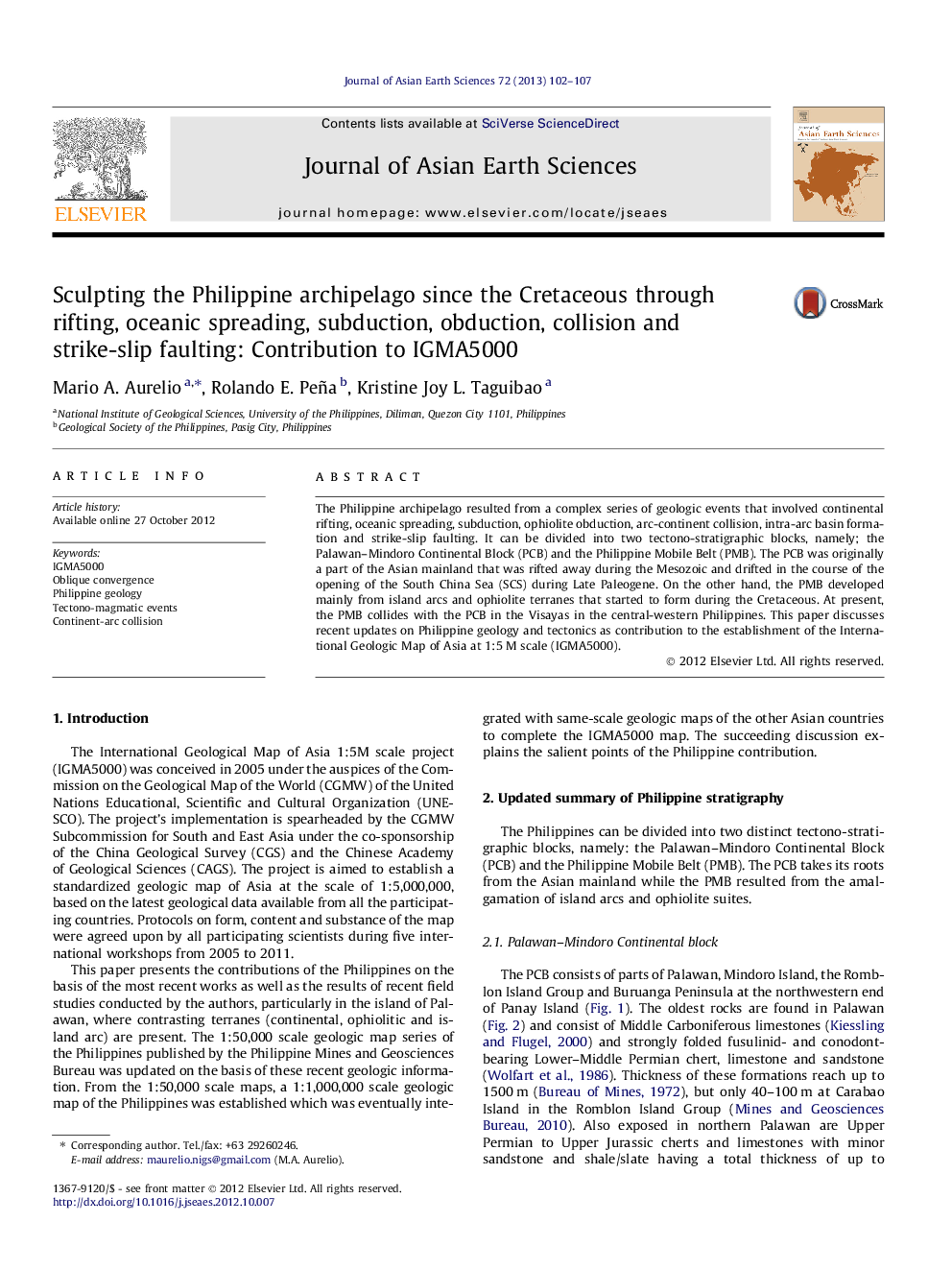| Article ID | Journal | Published Year | Pages | File Type |
|---|---|---|---|---|
| 4730969 | Journal of Asian Earth Sciences | 2013 | 6 Pages |
The Philippine archipelago resulted from a complex series of geologic events that involved continental rifting, oceanic spreading, subduction, ophiolite obduction, arc-continent collision, intra-arc basin formation and strike-slip faulting. It can be divided into two tectono-stratigraphic blocks, namely; the Palawan–Mindoro Continental Block (PCB) and the Philippine Mobile Belt (PMB). The PCB was originally a part of the Asian mainland that was rifted away during the Mesozoic and drifted in the course of the opening of the South China Sea (SCS) during Late Paleogene. On the other hand, the PMB developed mainly from island arcs and ophiolite terranes that started to form during the Cretaceous. At present, the PMB collides with the PCB in the Visayas in the central-western Philippines. This paper discusses recent updates on Philippine geology and tectonics as contribution to the establishment of the International Geologic Map of Asia at 1:5 M scale (IGMA5000).
► We discuss the evolution of the Philippines through complex tectonic processes. ► Recent findings in Palawan are presented in the context of SE Asia. ► Significance of Philippine tectonics is highlighted in the context of IGMA5000.
